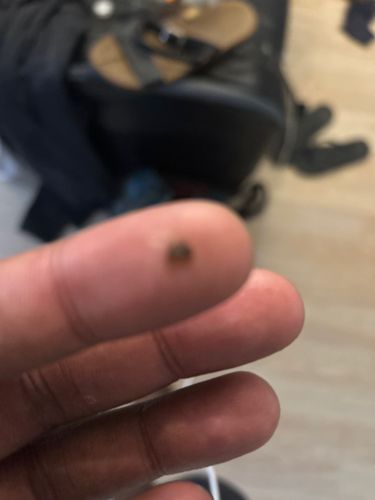Tick (likely a common species such as a Deer Tick or Dog Tick, but difficult to determine exact species from image alone)
Scientific Name: Ixodidae (hard ticks) or Argasidae (soft ticks) - specific genus/species is not identifiable from this image
Order & Family: Order Ixodida, Family Ixodidae or Argasidae
Size: Unfed ticks can be as small as 1-2 mm (nymphs) up to 3-5 mm (adults). Engorged females can be up to 10-15 mm.

Natural Habitat
Found in wooded areas, grasslands, tall brush, and can be brought into homes by pets or humans. Specific habitats vary by tick species.
Diet & Feeding
All ticks are obligate hematophagous ectoparasites, meaning they feed exclusively on the blood of vertebrates, including mammals, birds, and reptiles.
Behavior Patterns
Ticks typically 'quest' by climbing onto vegetation and waiting for a host to pass by, then latching on. They slowly feed for several days until engorged. They undergo a multi-stage life cycle (egg, larva, nymph, adult), with each active stage requiring a blood meal.
Risks & Benefits
Potential risks: Ticks are significant vectors of various diseases to humans and animals, including Lyme disease, Rocky Mountain spotted fever, anaplasmosis, ehrlichiosis, and tularemia. Benefits: Generally, ticks offer minimal direct benefits to ecosystems, though they serve as a food source for some birds and small mammals.
Identified on: 9/15/2025